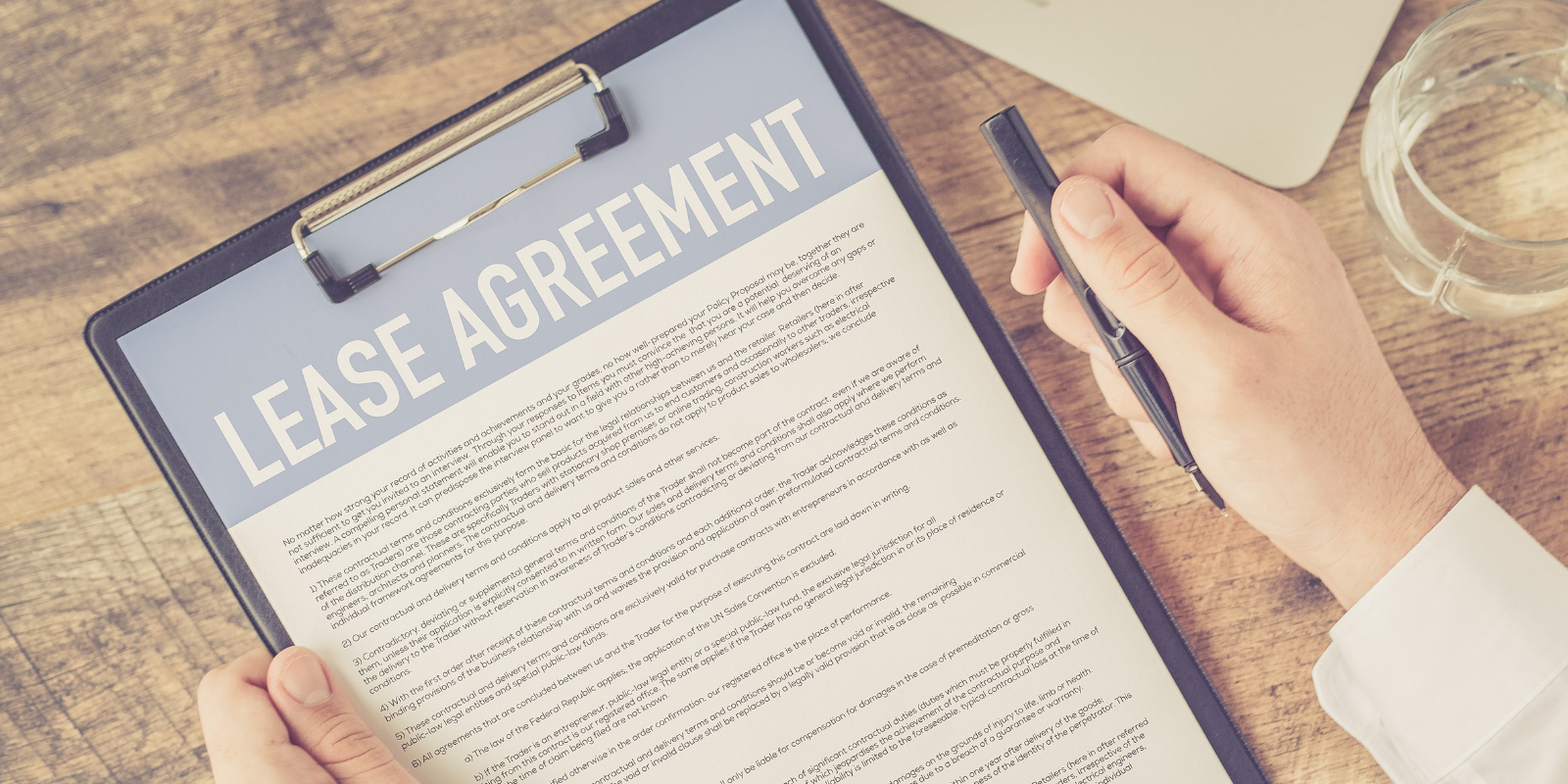5 min read
Portable Tenant Screening Report: A Comprehensive Guide
Discover the benefits and considerations of Portable Tenant Screening Reports (PTSRs), which offer a cost-effective, reusable screening option for tenants and require...

A lease agreement is the most important document between a landlord and a tenant. We’ve discussed what is on a standard lease agreement and want to take that a step further and dive into common lease terms, specifically around clauses, provisions, addendums, and rules. These things are the meat and bones of a lease. We sat down with Sarnen Steinbarth, TurboTenant’s Founder, CEO, and long-time landlord, to discuss the differences between, as well as insights into confusing provisions, landlord landmines, and how to create a solid relationship with your tenants.
Clause and provision can usually be used synonymously within a lease and generally mean the same thing. Clauses and provisions are written to comply with state and local landlord-tenant laws and are written in legal jargon. Clauses and provisions can also change from state to state, depending on the local and state laws. For the purposes of this article, I will use the word Provision to describe these. In the state leases we are launching, we also use the term provision.
Addendums are added to support the lease agreement or may be required by law in some counties or states. Think of these similarly to an attachment to an email. A Lead Paint Disclosure is a common addendum added to a lease. Addendums can also be used to add additional provisions or modifications to a lease agreement after the lease has been signed, instead of executing a new agreement. Most lease agreements will state that addendums are allowed, legally binding, and subject to the same provisions within the lease agreement. Once the tenant and landlord agree on the addendum and sign, it becomes legally binding.
While Provisions are state and local laws and contain legalese, Rules can be thought of more as the “Landlord’s House Rules,” and are phrased more casually, and are not required by law within a lease agreement. However, they are still legally binding per the terms of the lease once signed by the landlord and tenant. Rules are commonly added to the lease as an addendum, which keeps the lease looking a little cleaner and easier to read. When creating a Rules addendum, you want to be sure to use the same language used in the lease, for example, landlord and tenant, to ensure that the Rules Addendum is legally binding per the lease terms. Typical language may be “As an addendum to this lease, there are rules, and in the event of a conflict, the rules prevail.” A couple of examples that I have used are, Don’t use knives on the countertops, and Quiet hours after 9 pm. There isn’t a state law about these things, but they help facilitate a better and more transparent relationship with my tenants by setting expectations and clearly laying out the dos and don’ts.
I have found this to be a confusing one, and I often use this example when trying to clarify:
All parties on the lease are responsible for the full rent amount until the full rent amount is paid. Meaning, the lease does not specify the breakdown of the amount owed by each signer, so for example, if there are three tenants on the lease, and the rent is $1,200, the lease does not break down the specific amount each tenant will owe each month. This helps to protect the landlord in the event that one tenant cannot pay rent, because all parties on the lease are legally responsible for the full amount owed until the full amount is paid.
This is one is easily understood, but where I have seen the most confusion is around what happens when the lease ends. Does it become month-to-month? Does it end with no notice needed? Renew for the same period of time or a different period of time? I have seen several lawsuits in Montana between landlords and tenants around leases that auto-renewed for another 12 months unless notice is given. So, I have found it’s helpful to have a conversation about it, even though it is stated in the lease.
There is a law called the Uniform Residential Landlord-Tenant Act, which was updated in 2015, and a lot of states model their law around “what happens when a lease ends” after this act. It states that unless otherwise specified, at the end of the lease, the new term will be a month-to-month lease.
My biggest suggestion is to make sure the tenant understands what happens when the lease ends, and what terms it transitions to.
Make sure the tenant understands what is and isn’t refundable at the end of the lease term in regards to the security deposit. I have found having a thorough check-in and check-out process, along with a discussion around what is and isn’t normal wear and tear, clarifies this for my tenants. If you end up needing to keep a portion of the security deposit for damages, make sure you send a letter to the tenant regarding the damages.
What you have to give notice for, both on the landlord and tenant side, and how that notice must be given is often a point of confusion. There are laws on this in almost every state – sometimes email is acceptable, sometimes it is not acceptable and will not be held up in court. So the most important thing is to check your local and state laws and understand the correct and legal way to give notice, as well as when you have to give notice.
I have found this one to be commonly overlooked. What has saved me is making sure my tenants understand who can live in the rental, how long guests are legally allowed to stay, and when a guest becomes a tenant. I have also made sure to discuss things like subleasing and vacation rentals as well, such as the tenant wanting to AirBnB the space out. It’s better to have these conversations in the beginning so there isn’t any confusion.
I usually highlight this one and stress keeping the lines of communication open, meaning, if you see something say something. I don’t want the renter to feel like they are going to get in trouble or be responsible for an issue if they have one. It’s better to find out earlier rather than later so the issue doesn’t become bigger than it needs to be.
Below is a list of some of the standard and most helpful rule topics we’ve included in our leases:
I haven’t added anything additional, but we have done things to help our renters out such as Doordash gift cards, no rent raises and communicating more often. If I were a renter, I might consider adding a provision regarding remote learning. We recently moved in a few Colorado State students in, and if CSU decides to move to remote only classes, the renter may want to move earlier than intended, and I could see how a provision such as this would help them end their lease legally and earlier than they intended.
My biggest advice would be to not add illegal or unreasonable provisions to a lease. I’ve seen it happen numerous times, and the uncertainty of COVID may prompt landlords to put in provisions they think will safeguard them, but are actually illegal. And, if a tenant were to take them to court, it may result in their entire lease being thrown out and/or legal action. An example of this would be a provision about evictions and something to the effect that the terms of this lease supersede any state or federal laws on evictions, such as moratoriums.
A case brought by the US Dept. of Justice vs. a landlord in Montana resulted in a jury award of $37,000, which, in part, was related to illegal provisions in their rental agreement. So my advice is to have a solid lease, don’t include illegal provisions, and communicate more often during these uncertain times.
Have more questions for TurboTenant’s Founder, CEO, and resident landlord? Drop us a line at [email protected] and let us know! Learn more about What is on Standard Lease, and remember to always check local and state laws regarding lease provisions.

Subscribe to get tips, news, and hacks for even the most seasoned landlords.
5 min read
Discover the benefits and considerations of Portable Tenant Screening Reports (PTSRs), which offer a cost-effective, reusable screening option for tenants and require...
5 min read
Do you know who’s moving in? Without a thorough tenant screening report, you leave yourself open to financial harm. But when you...
9 min read
TurboTenant leads as the best landlord app of 2024, offering a suite of essential property management tools—from tenant screening to rent collection—designed...
Join the 600,000+ independent landlords who rely on TurboTenant to create welcoming rental experiences.
No tricks or trials to worry about. So what’s the harm? Try it today!
Accept Rent Online!
Don’t waste time dealing with checks or coordinating pickup times. TurboTenant is a safe and convenient way to automate rent collection. Sign up today!